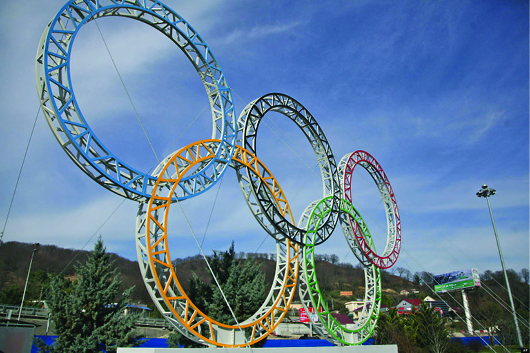THE SOCHI Winter Olympics ended last February 23 in the Fisht Olympic Stadium, concluding a competition that become known for the underdog pusuits of both Russia and Michael Christian Martinez, the Philippines’ lone representative.
The results of the medal tallies came as no surprise. First world countries with massive sporting budgets came out ahead. Russia finished first in the medal tally with 33 and had the most gold medals at 13. The United States (US) finished second with 28 medals, followed by Norway with 26, Canada with 25 and the Netherlands with 24.
Medals, however, do not tell the whole story. There were numerous surprises over the course of the games, including Russia’s men’s hockey team loss in a nail-biter to the US team and the emergence of Martinez to a wider Philippine audience, spotlighting the Filipino athlete’s arduous journey towards athletic prominence. These surprises, along with Russia’s notable hosting of the events became some of the highlights of the Winter Olympics.
Standing up to scrutiny
Amidst international doubts and scrutiny, Russia was ably to more or less successfully showcase itself with regard its ability to host international events.
In the weeks leading up to the games, Russia was plagued with extreme controversy. The Volgograd bombings and Russian President Vladimir Putin’s anti-lesbian, gay bisexual and transgender (LGBT) policies and human rights record had cast doubt on whether or not the games should be held in Sochi.
However, according to Richard Heydarian, lecturer for the Political Science department, Russia’s hosting of the games was “an excellent undertaking, with friendly hosts, glittery stadiums and maximum safety for athletes.”
“The games nevertheless pushed ahead and there were no major boycotts by the athletes themselves,” he added.
This was primarily because of Russia’s response to the threats: Nearly 30,000 police officers were stationed in Sochi and Putin promised that LGBT athletes would not be discriminated against. These measures were critical in allowing for the implementation and hosting of a safe, succesful Olympics.
Lone Olympian
In what was an Olympics for underdogs, the Philippines’ was put on the map with the emergence of Martinez as a world-class ice skater.
Martinez’s journey to the Olympics was a difficult one. Beginning at a skating rink inside a Las Piñas mall at age 8, he overcame asthmatic bronchitis and various injuries to win competitions here and abroad, making a name for himself and rightfully earning a ticket to Sochi.
However, the high cost of the ticket created some difficulties for Martinez. In an interview with Canada-based The Catholic Register last January, Martinez’s mom claimed that their house was mortgaged to help finance his son’s career while pleas for financial aid from Malacañang went unanswered.
These problems were further exacerbated by the cost of figure skating itself, plus the lack of support given by the government to winter sports. “Figure skating is one of the most expensive sports in the country,” said Mikaela Lopez, a communications technology management sophomore and former competitive figure skater, citing the high cost of equipment, training and travel.
“If we expect national athletes to excel well, they must get the best equipment, the best venues, the best coaching possible for them to achieve their highest potential. With what is allocated in the national budget, it cannot provide what the athletes need,” said Nino Sinco, a physical education instructor.
Lopez, formerly part of the Philippine national team, says there is “no shortage of talent,” but added that many ice skaters quit because of a lack of “support system and government funding.”
“I cannot emphasize enough how government support and donors matter to ice skaters and other athletes if they want to be Olympians. Perhaps with enough support and funding, these skaters wouldn’t have quit,” she said.




